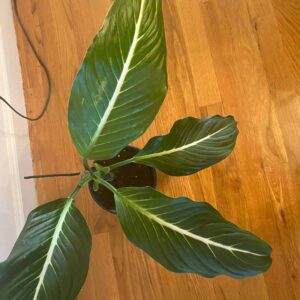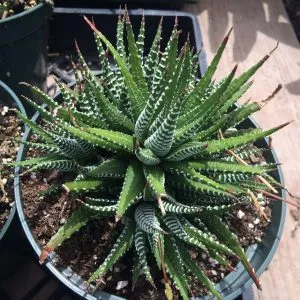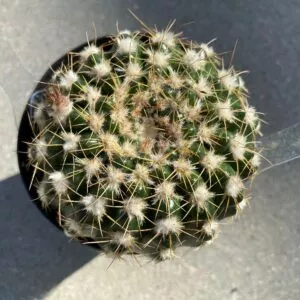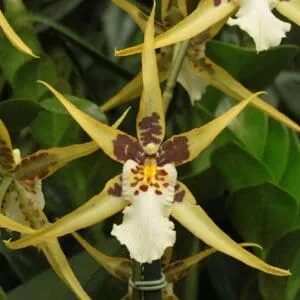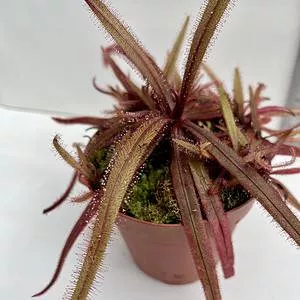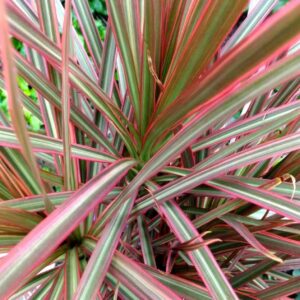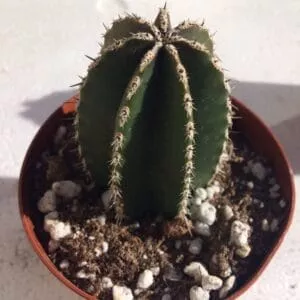No products in the cart.
Those who are just getting started with plants usually look for one that is not complicated to care for but at the same time looks nice.
If I were to name the one that fulfills these criteria, I’d say the Spider plant is an excellent choice.
Spider plant (Chlorophytum comosum) is a perennial, herbaceous, low-maintenance, pet-friendly houseplant.
One of the best qualities of this adorable ornamental plant is that it easily adapts to various environments and surroundings.
Stay with me to hear more about the essentials of the Spider plant- soil and light requirements, repotting, fertilizing, watering, and much more.
Plant Name: Chlorophytum comosum
Other Name: Spider plant, spider ivy, ribbon plant
Plant Type: Herbaceous Perennial
Native Areas: Central and Southern Africa
Light Requirement: Moderate indirect sunlight
Watering: Moderate
Fertilizer: Liquid Fertilizer
Toxicity: Non-toxic
Temperature: Warm temperatures
Propagation: Spider plant babies
Growth: 1-2 feet tall and wide
Soil Type: Loamy, well-drained soil
USDA Hardiness Zones: 9-11
More About Chlorophytum Comosum
Despite the creepy-crawly name, the spider plants are one of the most popular indoor plants to grow. These warm-weather plants can survive less-than-perfect environments.
Still, they look stunning when you mimic the native tropical plants’ growing conditions, providing them with humid air and warm temperatures.
Spider plants form slender arched foliage in the form of rosettes. It can reach up to 18 inches long. The leaf’s color varies and can be green leaves or ones with striped green margins to a white stripe. A notable thing is the narrow leaves for a spectacular display.
Mature plants send out long stems that bear star-shaped flowers; if fertilizer, it forms a small fruit. When the flowers fall off, you see tiny plantlets starting in their place that develop their roots, and you can snip them off for a new plant.
Spider plants grow moderately fast; you can plant them anytime but should not be exposed to frost.
Spider Plant Care Tips
Spider plants are often placed in plant containers or hanging baskets. This is because of the cascading nature of foliage with the long stems and small plantlets. You can grow them atop columns as well.
Still, when you place them in a container on a shelf or table, ensure that the long leaves do not crush and that the stems do not get too heavy in a small pot as it will tip over.
You can grow the spider plant outdoors in warm temperatures throughout the year. The most time-consuming thing is preventing dry soil from spring to fall during the growing season.
You must fertilize regularly and repot once you notice the roots outgrowing the container.
Soil Requirements for Spider Plant
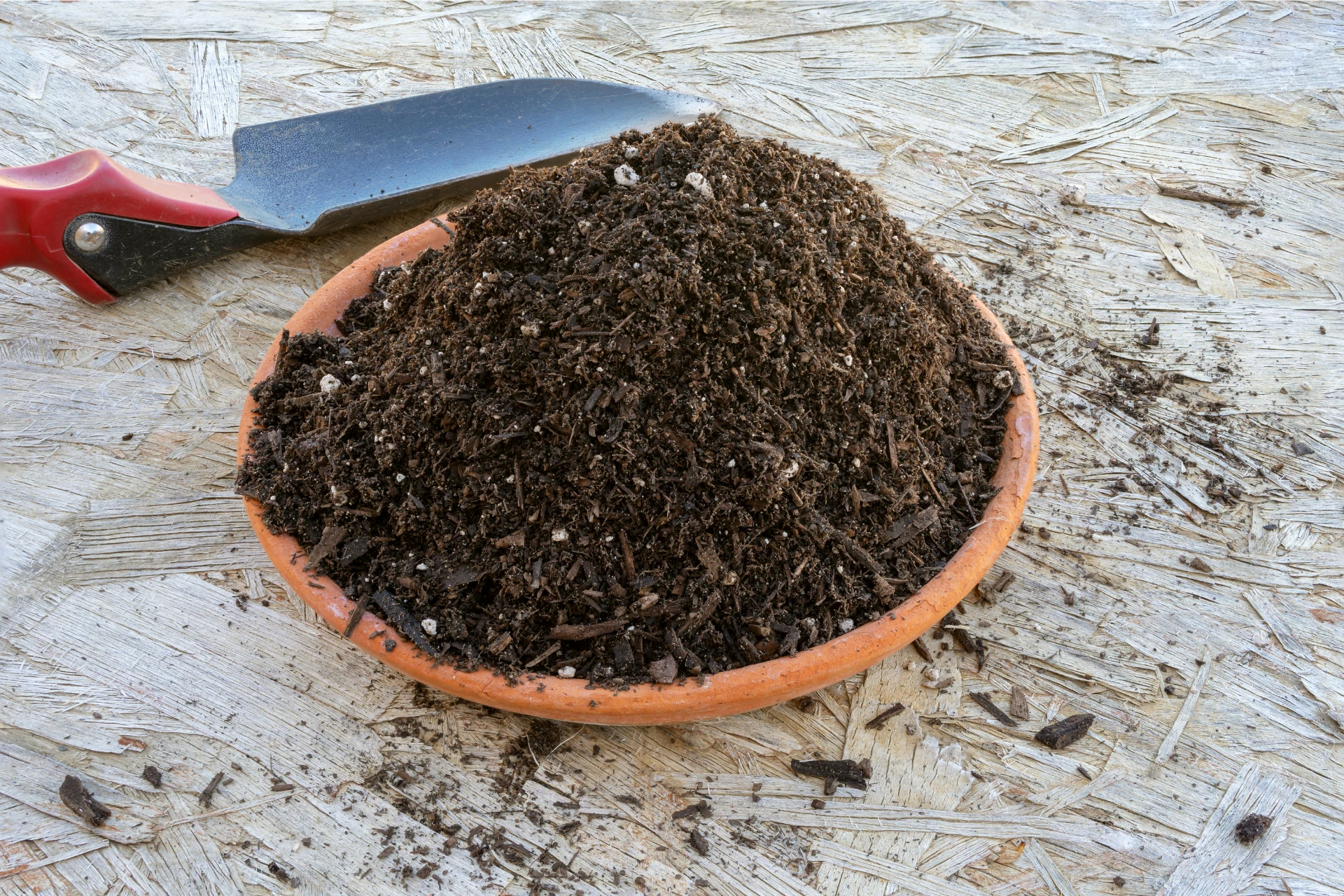
If I tell you that this plant doesn’t like too much water, then it’s easy to guess that it requires well-drained soil.
It would be best if you never allowed the soil to get soggy. Instead, keep it moist; that’s what this plant likes, which might lead to root rot.
You can buy various potting mixes, but you can also look for some DIY recipes, collect all the ingredients, and create an ideal medium for your plant.
Still, you need not have a green thumb to care for this plant, and using loamy soil in a plastic container with drainage holes is enough to allow excess water to drain.
Sunlight Requirements
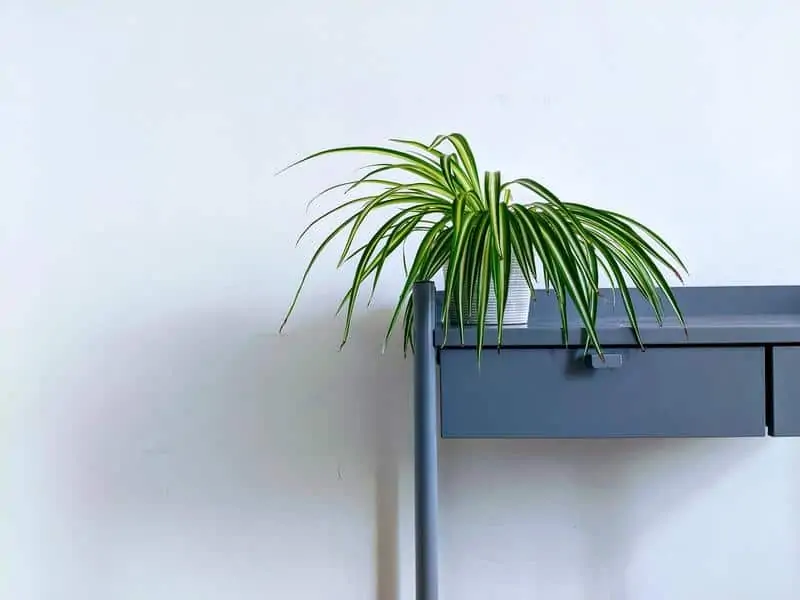 As with most plants, spider plants prefer indirect light-grown outdoors or indoors. Direct sun can result in tip burn and damage to the plant. The best is to find a location in a bright spot with indirect light. Something like sheer curtains is ideal in the home.
As with most plants, spider plants prefer indirect light-grown outdoors or indoors. Direct sun can result in tip burn and damage to the plant. The best is to find a location in a bright spot with indirect light. Something like sheer curtains is ideal in the home.
Still, it depends on the variegated forms you have, and checking each spider plant’s care needs is recommended.
How to Water Spider Plants
Watering will mainly depend on the season- during the growth phase (spring and summer), it should be more frequent; during the passive period (fall and winter), the frequency will be reduced.
Approximately once a week or ten days during active and once a month during passive is okay. But, to avoid much brainstorming, put the finger in the soil, about an inch deep, and check the ground.
If it’s dry, then it’s time to water your plant. Then, avoid pouring tap water, as fluoride toxicity harms plants. But if you leave it overnight, then it’s safe. Distilled water or rainwater are additional options.
Of course, it has to be room temperature; either of the extremes is unsuitable for the plant. As I said, this plant likes a humid environment and needs moisture, so you can occasionally mist it.
If your indoor air is too dry, besides misting, a humidifier can help.
You will find that potted plants need watering often, as you need moist soil for the airplane plant.
-
$10.00Sold By: Sparkys Thriftway
Only 1 left in stock
Dieffenbachia Plant
Rated 5.00 out of 5 based on 1 customer rating00Sold By: Sparkys Thriftway -
$16.99Sold By: Succulent Oasis
In stock
Large Succulent Zebra Plant or Haworthia Fasciata Succulent
Only 4 available and it’s in 1 people’s basketRated 4.84 out of 5 based on 352 customer ratings00Sold By: Succulent Oasis -
$11.99Sold By: Succulent Oasis
In stock
Cactus Plant Medium Notocactus Uebelmannianus. An interesting, deep green cactus.
Rated 4.84 out of 5 based on 352 customer ratings02Sold By: Succulent Oasis -
Free Shipping$29.99Sold By: Trees Again Nursery
In stock
TreesAgain Lemon Trees – Eureka “Four seasons” 3 starter plugs
Sold By: Trees Again Nursery
Temperature and Humidity
The ideal temperature for this plant is between 50 °F to 80 °F (about ten °C- 27 °C). The most important thing is to keep it constant.
For both aspects, moderate and with no variations are the two best words to describe the plant’s requirements.
Spider plant thrives in USDA hardiness zones 9B to 11, making it well-suited for these specific climatic conditions.
As mentioned earlier, spider plants need humidity to keep the solid green foliage looking great.
ABCs on Fertilizing
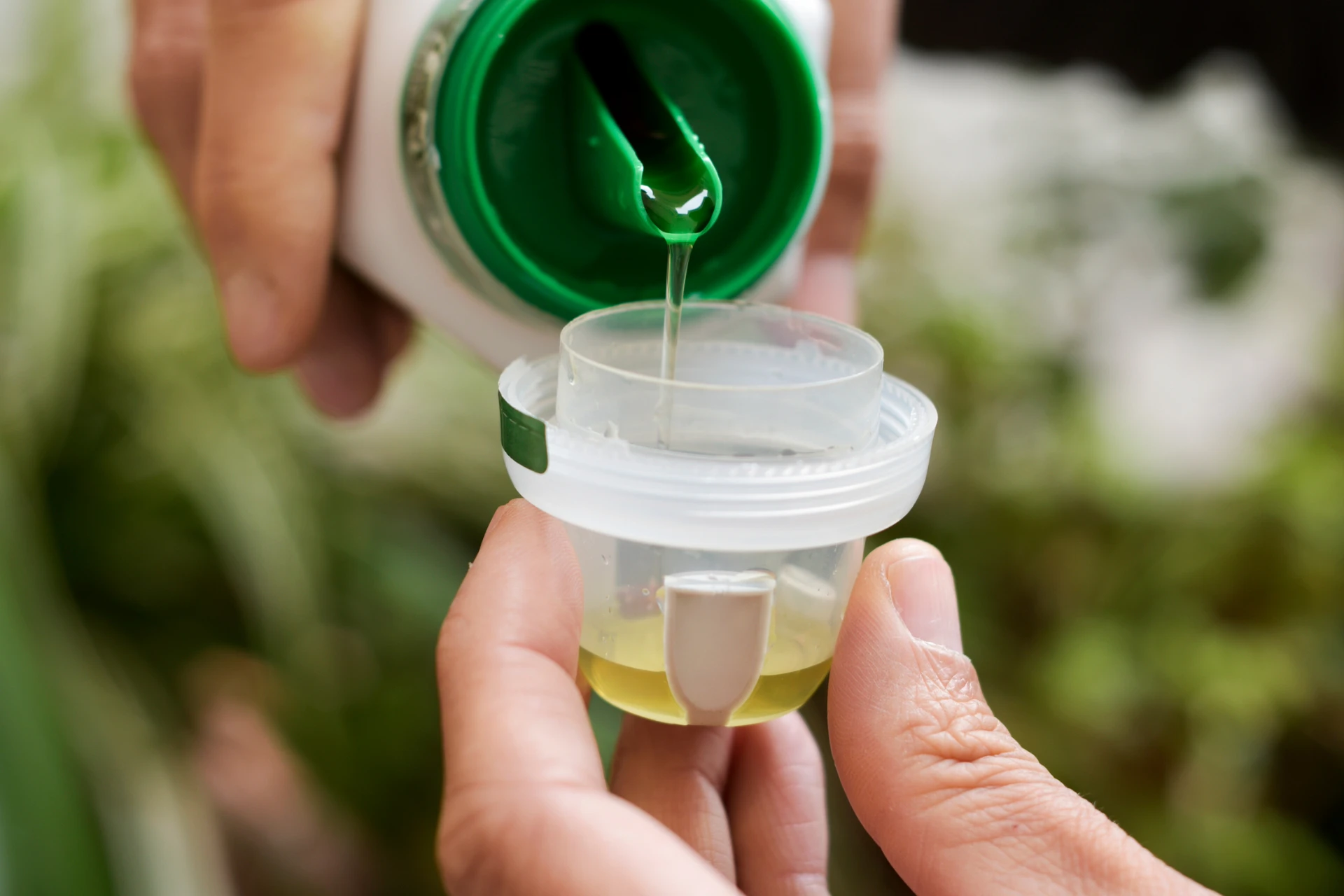
A plant receives all the vitamins and minerals it needs when growing in nature, but it might need some boost occasionally when inside.
This plant can do fine even when not fertilized, but a bit of “magical juice” won’t hurt.
There are many different types: liquid ones, pellets, and all-purpose – the most important thing is to choose mild ones and follow the instructions.
When fertilizing it, always pour some water on that. It will be less shocking for your plant and absorb the fertilizer more smoothly.
The rule is similar to watering, which is more frequent during the growth stage but not during sleep periods. We recommend a water-soluble fertilizer to prevent over-fertilization.
Repotting Instruction Manual
Repotting is done for the following reasons – to replenish the soil or to find a more comfortable container for your plant. This plant doesn’t like being rootbound, and keeping in mind that it grows fast, transplanting is a must.
Choose the container that is the next size compared to the one you have now so that your plant can adjust easily. And yes, if you spot lots of salt build-ups, you can repot it. This is one case in which you must repot your spider plant.
Repotting is also an excellent opportunity to examine your plant, check out the root ball and leaves, and see if there are any pests or similar. It is also the best time to provide a fresh potting mix.
Make a pause in watering for several days, four to five, and give your plant time to get used to the new soil and pot.
How to Choose the Best Pot?
When selecting the proper pot for your spider plant, ensure the size is suitable.
It needs to be proportionate to your plant because if it’s too small, the roots won’t be able to develop correctly; if it’s too large, then the roots will be the ones developing faster, not the upper part.
The right pot is the one that is a few inches bigger than the plant; that’s the proportion I’m talking about. Also, pay attention to the drainage hole, or even better – choose a container with a few smaller ones.
The material could be plastic or ceramics, but if I have to vote, I’d say plastic. Here’s why- spider plants have very strong roots and develop very fast, so they often break the pot.
That’s why a container made of solid plastic is a better choice.
Does Spider Plant Need to be Propagated and Pruned?
Yes, because it grows rapidly and quickly becomes too bushy, with roots too tangled. And it’s not just a matter of aesthetics, but also the importance of health.
When you spot plantlets, the tiny new plants, you should cut them off for the parent plant. This helps the plant’s energy to remain with the mother plant instead of the baby spider plants draining it from the parent.
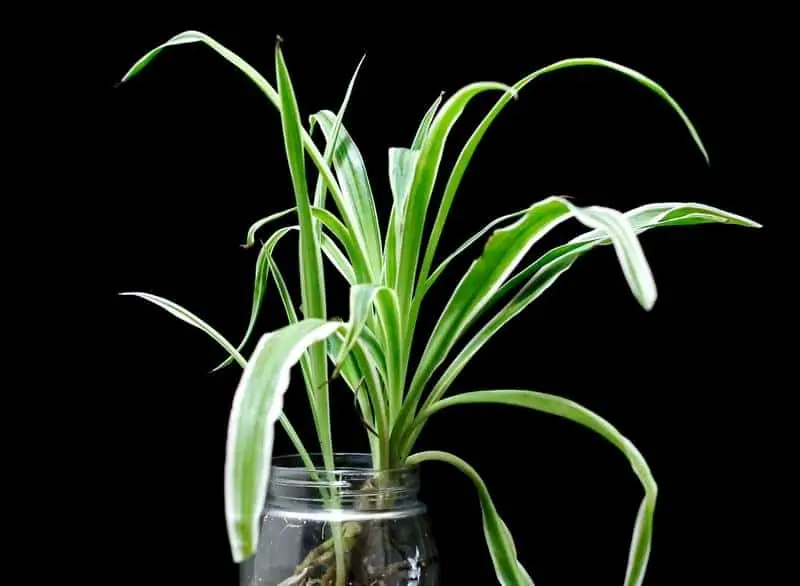
Remove any dead and infected leaves, trim the yellowish ones, cut the tangled roots, and you can even report them for more new plants.
When cutting the roots, you use a sharp knife, while trimming (pruning) is done with sharp scissors or smaller pruning shears.
Propagating Spider Plants
Spider plants produce plantlets you can remove from the mother plant to share with family and friends.
-
When you see baby spider plants on the stem, choose one that has developed roots of about an inch long. Remove the plantlets, keeping the roots intact.
-
Choose small containers for your new potted plants with well-drained soil. Keep the soil moist until they become established.
-
For the plantlets with no roots, you can place them in the potting mix close to the mother plant on top of the soil and keep it moist. In a few weeks, you will notice roots developing, and you can then snip it off from the mother plant.
Plant VS Pests
Most common pests can be fought naturally with homemade bug sprays, rinsing, etc. Those are aphids, mealybugs, whiteflies, and spider mites.
Of course, if there are too many of them or the problem is persistent and rinsing, and DIY won’t do, find some adequate but not too heavy insecticides or miticides. Another great product to use is neem oil.
Final Thoughts
As you can see, there’s nothing overly confusing about this plant; it’s more or less something that common sense would tell you to do. Apart from all these steps, you need one more ingredient to keep your Spider plant happy – your love!
Frequently Asked Questions
Using seed propagation is not common with spider plants as they are easily grown from the offsets or division of the root ball. If your plants do flower and produce seeds, you can try it.
Still, the blooms must be cross-pollinated in spring and summer to produce fertile seeds.
You can do this indoors using a small brush or a cotton swab as the blooms appear. After the flowers fade, you will see seed pods form, and when dry, you can remove them and break them open to collect the seeds.
Then plant them in a small container with soil, keep them warm, and provide them with moist soil.
In winter, you need to cut back on fertilizing as the plant goes semi-dormant, and you need to keep them warm and mist them.
Spider plants are sensitive to chemicals found in tap water. When you notice growing leaves starting at the tips, it is best to use rainwater or distilled water.
But brown leaf tips can result from too much direct sunlight, and it is best to move your plants to a shaded spot but not a heavy shade one, as it will lead to stunted growth.
Perennial plants growing in a hanging basket, like spider plants, can be long-lived when repotted regularly or divided.
You can grow spider plants outdoors in warm climates, and you can also grow them as an annual in cooler regions. You can place them in a garden bed as edging or in raised beds to window boxes.
The spider plants are air-purifying species that remove formaldehyde from the air.
Whether you want to buy, sell, or simply reach out to other plant enthusiasts, Plantly is the right place to be!
-
Free Shipping$39.99Sold By: Aloha Hawaii Orchids
$49.99In stock
Orchid Maclellanara Yellow Star ‘Golden Gambol’ Tropical Live Plants from Hawaii
Rated 4.65 out of 5 based on 268 customer ratings02Sold By: Aloha Hawaii Orchids -
Free Shipping$15.00Sold By: Sam's Curious Cultivars
In stock
Lance Leaved Sundew, Drosera Adelae, Young Bare Root plant
Sold By: Sam's Curious Cultivars -
Free Shipping$21.99Sold By: Gar-Zen Botanical Design
Only 3 left in stock (can be backordered)
Dracaena Red Dragon Tree Ships Free.
Only 3 available and it’s in 1 people’s basketRated 4.86 out of 5 based on 49 customer ratings00Sold By: Gar-Zen Botanical Design -
$11.99Sold By: Succulent Oasis
In stock
Cactus Plant Medium Mexican Fence Post
Rated 4.84 out of 5 based on 352 customer ratings01Sold By: Succulent Oasis
